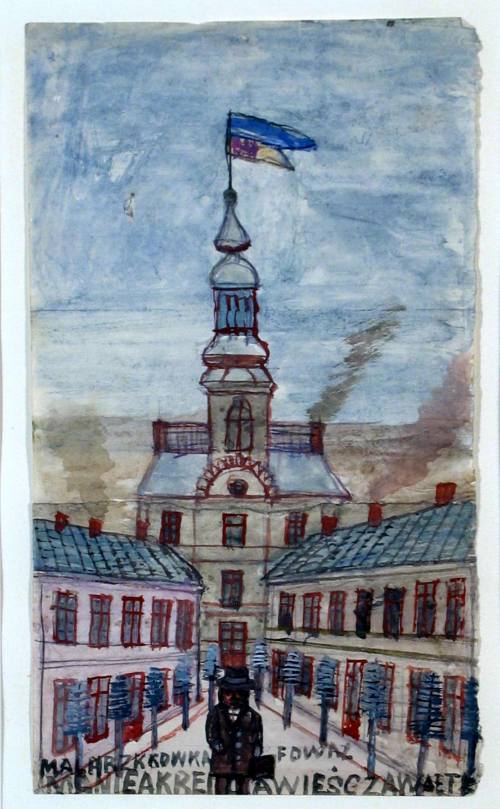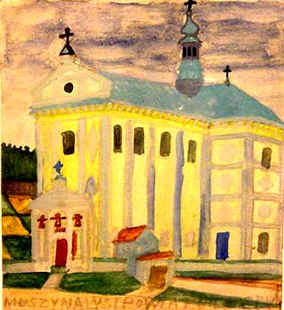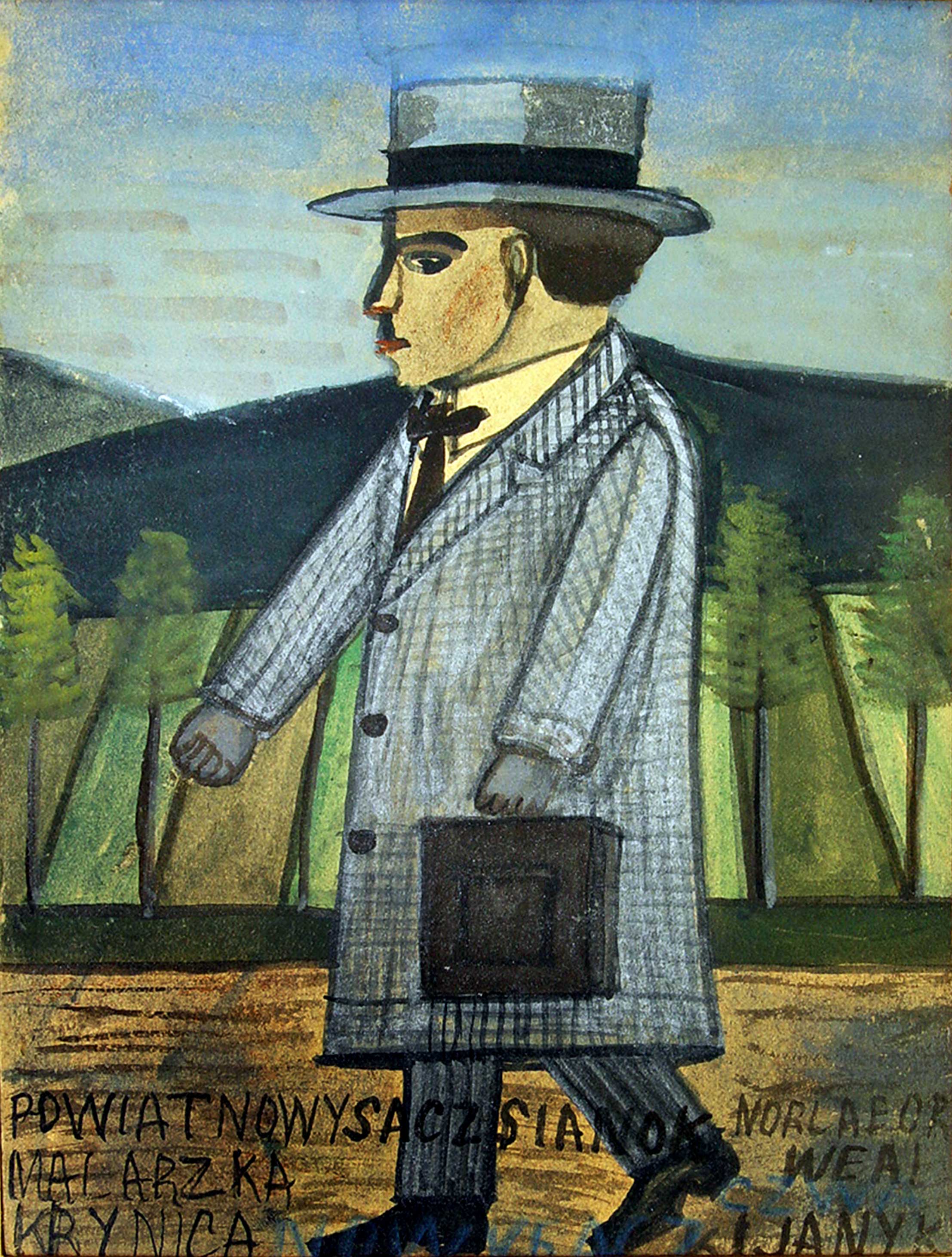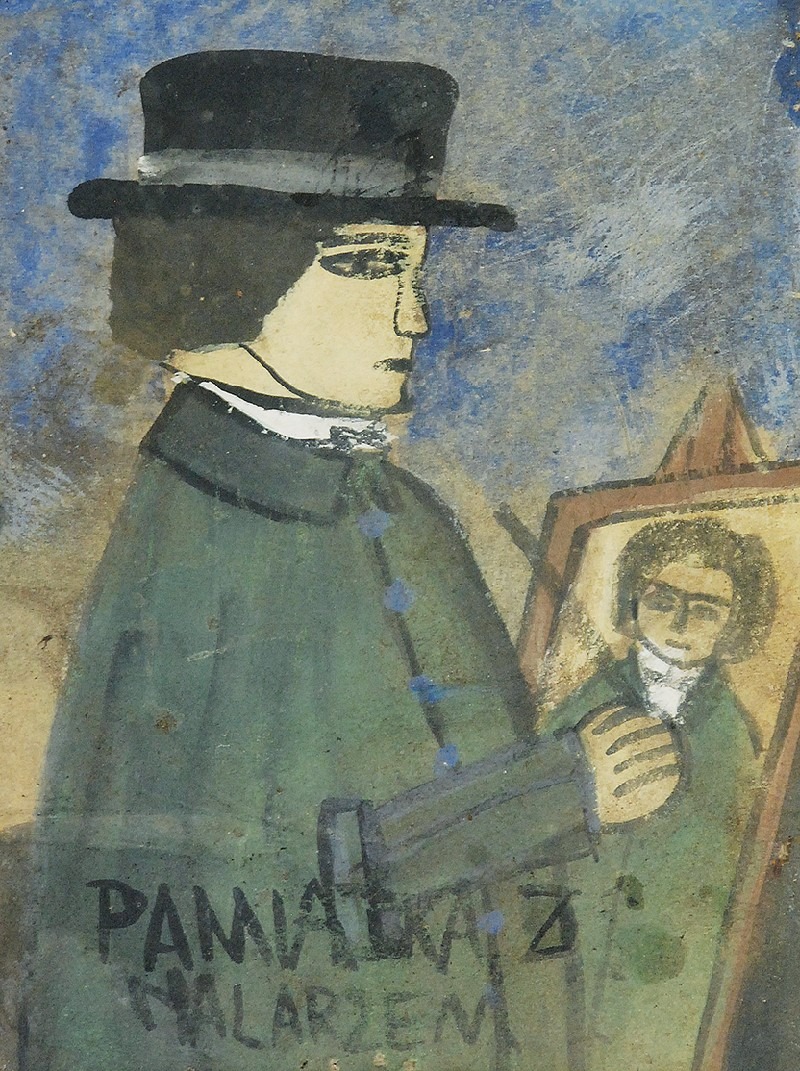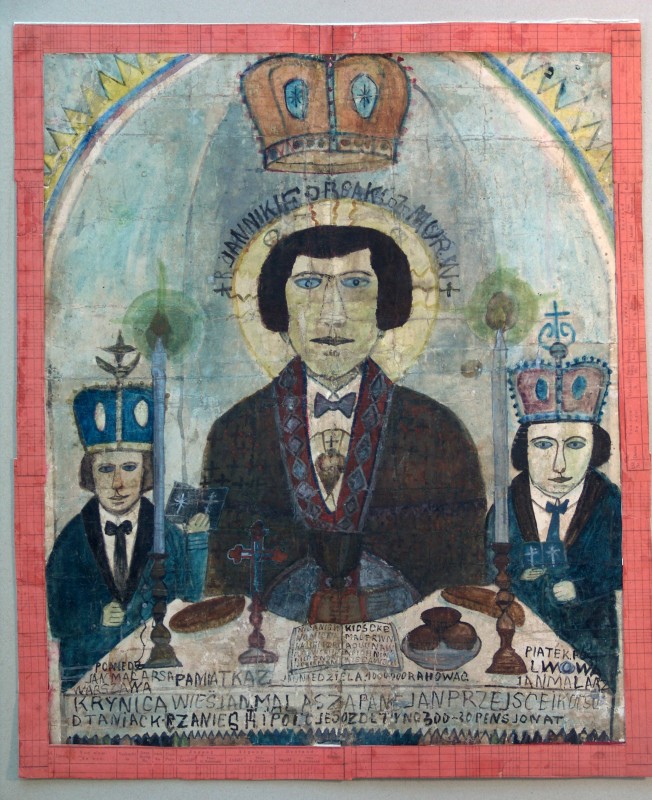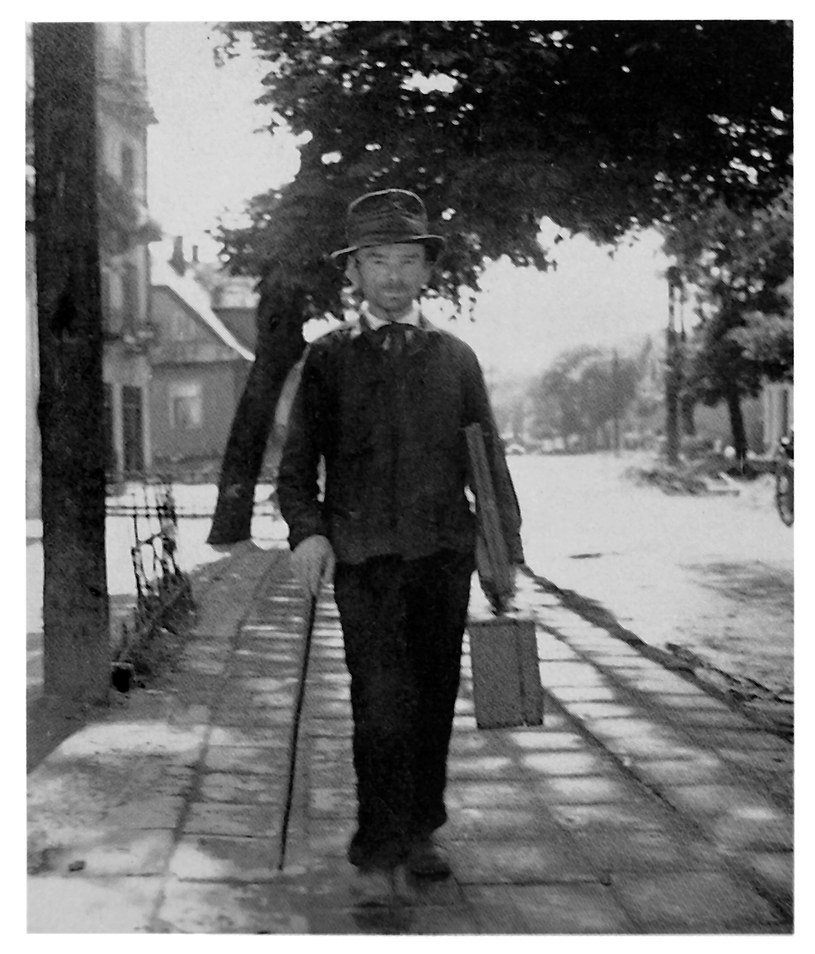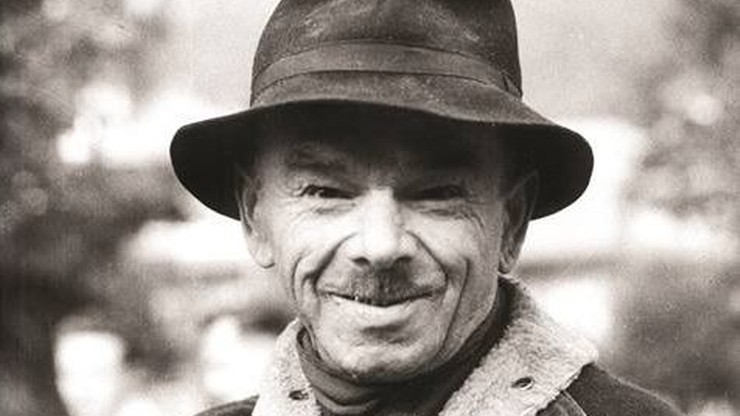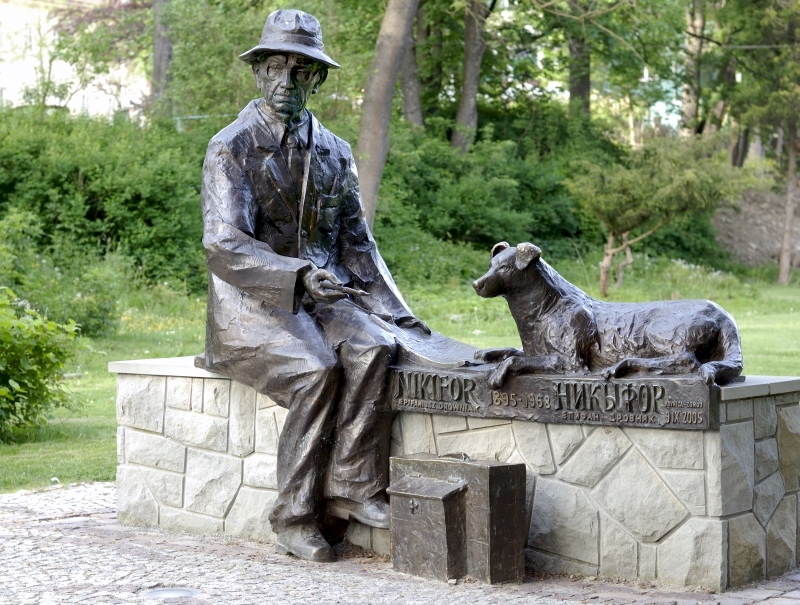|
|
Post by tufta on Dec 4, 2008 11:50:20 GMT 1
Ok, I'm curious. Explanation, please...who is Nikifor?  Also called Nikifor Krynicki, real name Epifaniusz Drowniak. Born 1895, died 1968 in Krynica. Considered one of the world's finest naïve (primitive) painters; self-taught. Also called Nikifor Krynicki, real name Epifaniusz Drowniak. Born 1895, died 1968 in Krynica. Considered one of the world's finest naïve (primitive) painters; self-taught.
Nikifor was a Lemko after his mother. His father was a Pole; the legend has it that he was a recognized painter, code-named "T". Nikifor's mother raised him on her own, in extreme poverty and hardship, hiring herself out for various household jobs. He inherited from her a hearing and speech impediment. Orphaned during World War I and unable to communicate with people around him, he was initially treated by the population of Krynica as a misfit, was ridiculed and isolated physically and emotionally.
The origins of his name (or nickname) are unknown. He used it from his young years (its first version is supposed to have been Netyfor) and, for a long time, had no surname. For the occasion of the first exhibition of his works, mounted at the Warsaw Polish Architects' Association (SARP), he was named "Jan Nikifor", as immortalized by a poster. It was not until 1963 that he was officially given the surname "Krynicki" (and a flat from Krynica authorities), his administrative status finally resolved. In 2003 the local court in Muszyna resolved, however, that his true name was Epifaniusz (Epifan) Drowniak.
Likewise, it is unknown when he started to draw and paint. From the very start, however, he was clearly focused on the target he had set for himself: to be a painter, a Matejko from Krynica.
Nikifor was a local patriot: deported twice to a remote corner of Poland under the Akcja Wisla [the 1947 deportation of southeastern Poland's Ukrainian, Boyko and Lemko populations, carried out by the Polish Army], he stubbornly returned to his home town.
Many of Nikifor's earliest preserved works, dating from before 1920, reveal his effort to perfect his skills. Wrote Tadeusz Szczepanek:
"The majority of the preserved drawings are par excellence study sketches, with traces of erasing and correcting wrong lines. Nikifor strives to master convergent perspective, plots axes of symmetry, moves the crossing point of lines to other spots, tests his ability to use the frog and bird perspectives".continued here www.culture.pl/en/culture/artykuly/os_nikifor_krynicki 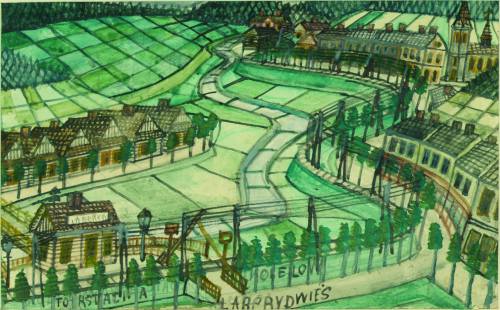 |
|
|
|
Post by jeanne on Dec 4, 2008 12:47:46 GMT 1
Tufta,
Thanks for the info.! I'll have to take some time later to read through the link to find out about the dog...unless you can tell me its significance!
Jeanne
|
|
|
|
Post by tufta on Dec 4, 2008 18:18:09 GMT 1
Tufta, Thanks for the info.! I'll have to take some time later to read through the link to find out about the dog...unless you can tell me its significance! Jeanne I really don't know. I think the dog is important because it was always with the painter. Probably Bo will present the picture of the whole sculpture, so we will see the monument is not of a dog only  BTW. I do remember seeing Nikifor in Krynica when I was a boy. My parents tried to explain to me who he is and that he came on foot from Szczecin to where he is. I faintly remember a very strange feeling I had while being near him. |
|
|
|
Post by Bonobo on Dec 5, 2008 0:18:04 GMT 1
Ok, I'm curious. Explanation, please...who is Nikifor?  Also called Nikifor Krynicki, real name Epifaniusz Drowniak. Born 1895, died 1968 in Krynica. Considered one of the world's finest naïve (primitive) painters; self-taught. Also called Nikifor Krynicki, real name Epifaniusz Drowniak. Born 1895, died 1968 in Krynica. Considered one of the world's finest naïve (primitive) painters; self-taught.There was a nice film made about Nikifor. The main part was played by a female, a great Polish actress, Krystyna Feldman. See her in the film    |
|
|
|
Post by Bonobo on Dec 5, 2008 0:27:16 GMT 1
|
|
|
|
Post by jeanne on Dec 5, 2008 12:35:37 GMT 1
I really don't know. I think the dog is important because it was always with the painter. Probably Bo will present the picture of the whole sculpture, so we will see the monument is not of a dog only  BTW. I do remember seeing Nikifor in Krynica when I was a boy. My parents tried to explain to me who he is and that he came on foot from Szczecin to where he is. I faintly remember a very strange feeling I had while being near him. Was his dog with him when you saw him??  |
|
|
|
Post by jeanne on Dec 5, 2008 12:40:39 GMT 1
I am not too fond of such art but let`s appreciate the fact Nikifor didn`t study art at all. I think they have a certain charm...plus his subjects seem to be VERY Polish, which I appreciate. |
|
|
|
Post by jeanne on Dec 5, 2008 12:41:52 GMT 1
There was a nice film made about Nikifor. The main part was played by a female, a great Polish actress, Krystyna Feldman. Wow, she had me fooled as far as being a female! |
|
|
|
Post by valpomike on Dec 5, 2008 15:46:28 GMT 1
For what I know, I think, his work looks like that of a young child, something my grandchildren would draw. But what do I know.
Mike
|
|
|
|
Post by Bonobo on Dec 5, 2008 21:30:45 GMT 1
I am not too fond of such art but let`s appreciate the fact Nikifor didn`t study art at all. I think they have a certain charm...plus his subjects seem to be VERY Polish, which I appreciate. For what I know, I think, his work looks like that of a young child, something my grandchildren would draw. But what do I know. Mike This kind of art is called primitivism, and one of its shades is Naive Art. en.wikipedia.org/wiki/Na%C3%AFve_artNaïve art is characterized by a childlike simplicity. It is a gross oversimplification to assume that Naïve art is created by people with little or no formal art training. The term naïve art presumes the existence (by contrast) of an academy and of a generally accepted educated manner of art creation, most often painting. In practice, however, there are schools of naïve artists. Over time it has become an acceptable style. The characteristics of naïve art are an awkward relationship to the formal qualities of painting. Difficulties with drawing and perspective that result in a charmingly awkward and often refreshing vision, strong use of pattern, unrefined color, and simplicity rather than subtlety are all supposed markers of naïve art. It has, however, become such a popular and recognizable style that many examples could be called pseudo-naïve. Whereas naïve art ideally describes the work of an artist who did not receive a formal education in an art school or academy, for example Henri Rousseau or Alfred Wallis, 'pseudo naïve' or 'faux naïve' art describes the work of an artist working in a more imitative or self-conscious mode and whose work can be seen as more imitative than original. Primitive art is another term often applied to the art of those without formal training. This is distinguished from the self-conscious movement primitivism. Another term related to (but not completely synonymous with) naïve art is folk art. Nikifor (1895 - October 10, 1968) (also known as Nikifor Krynicki and Epifaniusz Drowniak1) was a Polish folk and naïve painter of Lemko descent. Nikifor painted over forty thousand pictures - on sheets of paper, pages of notebooks, cigarette cartons, and even on scraps of paper glued together. The topics of his art include self-portraits and panoramas of Krynica, with its spas and Orthodox and Catholic churches. Underestimated for most of his life, in his late days he became one of the most famous primitivist painters.
Contents
[edit] Biography
Little is known of private life of Nikifor. For most of his life he lived alone in extreme poverty in Krynica, and was considered a mentally challenged person. He had difficulties talking and was almost illiterate. It was not until late in his life that it was discovered that in fact his tongue was attached to his palate, which was the reason why his speech was unintelligible to most. In 1930 his first paintings were discovered by Roman Turyn, who brought them to Paris. That made Nikifor gain some fame among the Kapists, a group of young painters formed around Józef Pankiewicz. However, this did not change his fate as his art was still being underestimated in Poland. In 1938 Jerzy Wolff published an enthusiastic review of Nikifor's art in Arkady monthly and bought some of his works. However, the war prevented Nikifor from gaining any notoriety.
In 1947 Nikifor was deported during Operation Wisla. The Lemko and Ukrainian minorities were resettled with force in northern and western Poland. Three times he attempted to return to Krynica. He was actually very lucky that the autorities allowed him to stay the third time, as other Lemko and Ukrainian people who tried to return to there native villages, were deported to the concentration camp in Jaworzno.[1]
In 1960 Nikifor met Marian Włosiński, a painter living in Krynica. The latter decided to devote his career and life to helping the elderly artist and promoted his works in major galleries of Poland. This led to a large exhibition in the Warsaw-based Zachęta Art Gallery, which became a huge success. After the death of Nikifor in 1968, most of his works were preserved by Włosiński and donated to various museums. The most complete collection is stored in the Regional Museum of Nowy Sącz and the Krynica-based museum of Nikifor.
The name and surname of Nikifor have been a matter of dispute for over half a century now, as the artist had no known relatives, documents and was almost illiterate. He himself signed his works with the names of Nikifor, Netyfor or Matejko. In 1962 the communist authorities of Poland arbitrarily chose a name of Nikifor Krynicki (Nikifor of Krynica) in order for the artist to receive a passport. This act was declared null by a court in 2003, following a statement by the Lemko Association of Poland. The Lemkos argue that Nikifor was baptized Epifaniy Drovnyak (spelled Epifaniusz Drowniak in Polish) and his parents were Eudokia Drowniak, a deaf-mute Lemko woman and an unknown father. Following the court's ruling the name on his grave in Krynica cemetery was changed. Currently his tombstone bears two names: "Nikifor Krynicki" in Latin letters and "Epifaniy Drovnyak" in Cyrillic script.en.wikipedia.org/wiki/Nikifor |
|
|
|
Post by Bonobo on Dec 5, 2008 21:32:13 GMT 1
There was a nice film made about Nikifor. The main part was played by a female, a great Polish actress, Krystyna Feldman. Wow, she had me fooled as far as being a female!
Krystyna Feldman (March 1, 1916 - January 24, 2007) was a Polish actress.
Born in Lemberg, Austria-Hungary (now Lviv, Ukraine), Feldman starred in theatre productions there until 1944, and later in Łódź, Szczecin, Opole, and Kraków. Since 1983, she performed at the Teatr Nowy in Poznań.
Feldman made her film debut in 1953's Celuloza by Jerzy Kawalerowicz. Her career continued with various supporting roles. She was best known for a male role of an elderly disabled painter Nikifor in Mój Nikifor, for which she won the award for best actress in 2004 at the Polish Film Festival in Gdynia and numerous awards at other festivals in the world. She also appeared as the grandmother in the TV sitcom, Świat według Kiepskich.
Krystyna Feldman died of lung cancer in her flat in Poznań, aged 90.upload.wikimedia.org/wikipedia/commons/thumb/f/f7/Krystyna_Feldman.jpg/800px-Krystyna_Feldman.jpg |
|
|
|
Nikifor
Nov 25, 2010 23:56:14 GMT 1
Post by pjotr on Nov 25, 2010 23:56:14 GMT 1
|
|
|
|
Post by Bonobo on Dec 2, 2018 22:57:29 GMT 1
|
|
















